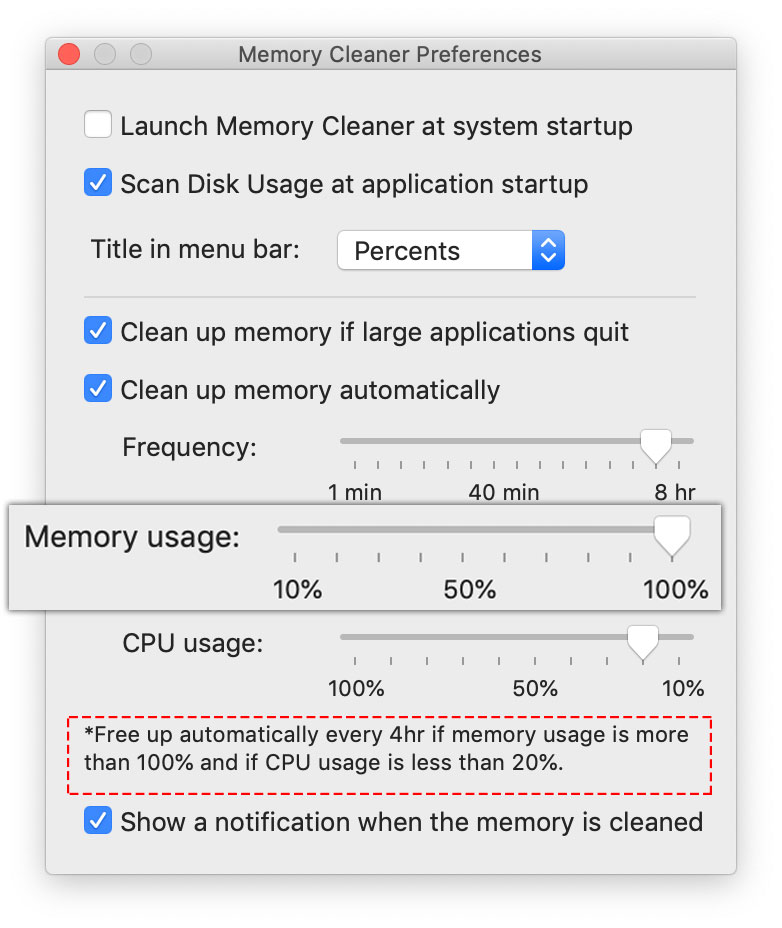


- #System out of memory clean up command how to#
- #System out of memory clean up command software#
- #System out of memory clean up command download#
- #System out of memory clean up command free#
#System out of memory clean up command how to#
Information on how to create a bootable diskette is on our boot disk page. MS-DOS users can find additional information on getting additional memory and conventional memory by following suggestions found on our autoexec.bat and config.sys page. How to find how much RAM is installed on a computer.
#System out of memory clean up command software#
The system requirements are found on the side or back of the software packaging. Not enough memory installed in the computerĮnsure the computer meets the minimum system requirements of the software that you are trying to run. Before trying any of the steps below, we suggest you first try rebooting the computer. Often out of memory errors can be resolved by rebooting the computer. Hopefully, this quick tip helps you clear your system swap memory if you ever find yourself in need of just such a fix.Updated: by Computer Hope Computer needs to be rebooted
#System out of memory clean up command free#
(use free -m to see the amount of swap used/available decrease over time) Here are all of the commands you'll need! Check space: # free -m This clears the swap memory cache and re-enables it. Once you power it off, you can wait an arbitrary amount of time (30 sec or so) to give the operation time to complete, then power the swap back on. An easy way to do this is to run 'free -m' to see what is being used in swap and in RAM. It also means that you need to be sure you have the RAM to support this operation. This moves all data from swap memory back into RAM. To clear the swap memory on your system, you simply need to cycle off the swap. For the first time in your terminal life, things are going to be easy here. Easy day. Now that you understand the underlying parameters that control the swap behavior on our system, you're ready to learn how to clear that memory, should the situation arise. To verify the value that you set, simply cat the swappiness file that you looked at earlier to find out the original value. You can check your current swappiness setting by running the following command: $ cat /proc/sys/vm/swappiness If you wanted to change up the swappiness of your system, the procedure is very straight-forward. A value of zero causes no swapping at all to occur, so if you want to minimize swapping to its lowest possible value without turning it off, you should set it to at least one. Small values cause little swapping to occur, whereas high values can cause very aggressive swapping. The default value for swappiness is 60 however, you can manually set it anywhere between 0-100. Swappiness refers to the kernel parameter responsible for how much and how often that the system moves data from RAM to swap memory. So now that you know the lingo, you're ready to explore what it means. The culprit here is the ‘swappiness’ of the system. Occasionally, a system uses a high percentage of swap memory even when there is RAM available for use. This article is a discussion about this situation and the solution required. If that is the situation that you find yourself in, you’ve come to the right place. However, there is a niche situation that can cause an administrator to need to clear the system swap manually. Most enterprise environments have swap built into the systems, and these memory caches are not manipulated unless there is an apparent lack of memory available or if a server crashes due to the OOM killer (out of memory) error. Swap memory is usually a "set it and forget it" type of affair. Old Linux commands and their modern replacements.Linux system administration skills assessment.A guide to installing applications on Linux.
#System out of memory clean up command download#
Download RHEL 9 at no charge through the Red Hat Developer program.


 0 kommentar(er)
0 kommentar(er)
